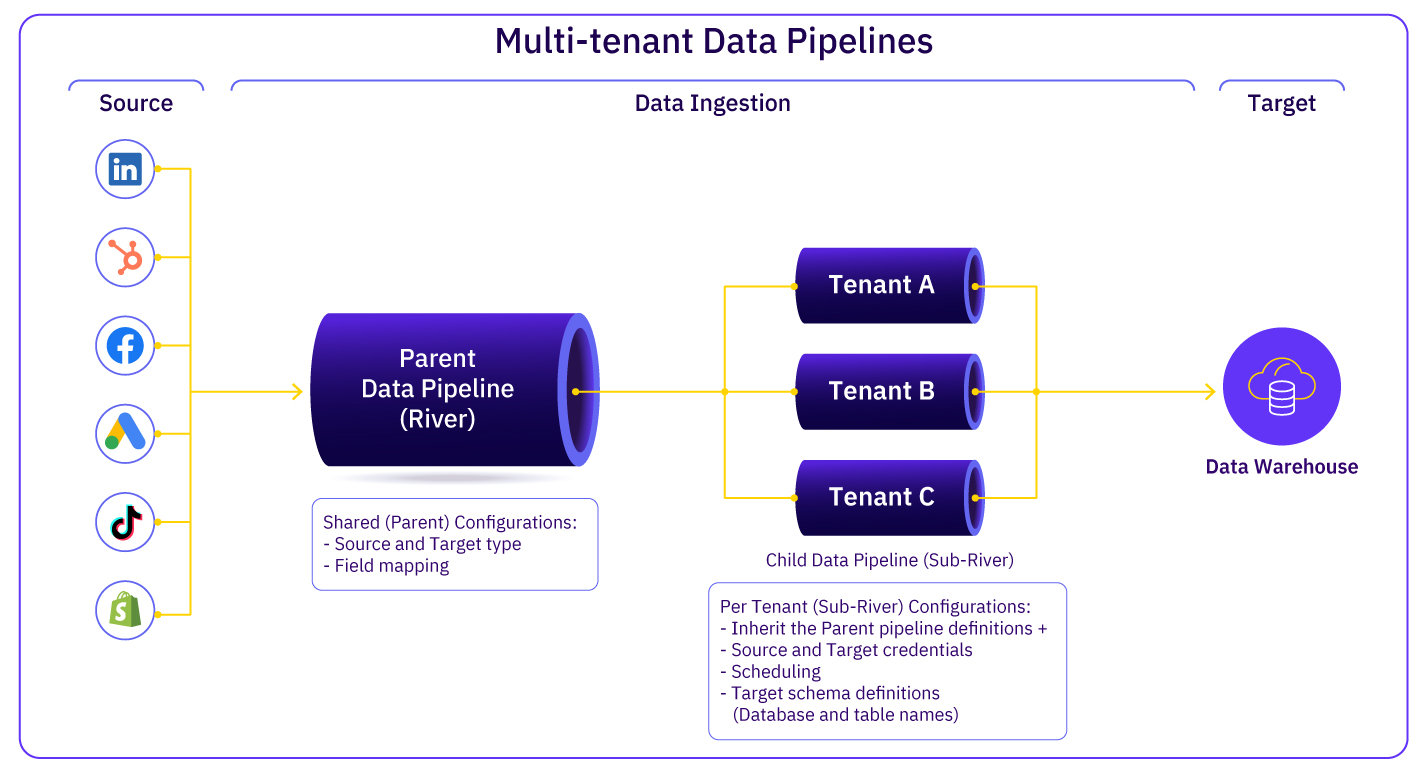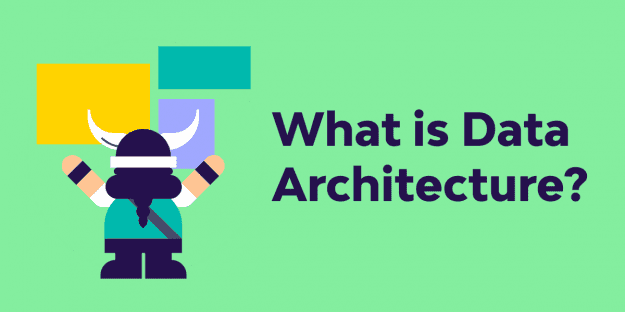In today’s data-driven world, the ability to efficiently manage and process vast amounts of data is critical for businesses seeking a competitive advantage. Data pipelines are essential components that enable organizations to collect, transform, and move data from various sources to data warehouses and analytics platforms. Rivery stands out as a robust platform that simplifies the data integration process among the many data pipeline solutions available. Let’s dig in and explore the value and benefits of building scalable multi-tenant data pipelines in Rivery using its innovative feature, Sub-Rivers.
The need for multi-tenant data pipelines
Rivery is a cloud-native, fully managed data integration platform designed to streamline and automate data workflows. It empowers organizations to connect to hundreds of data sources and destinations without the need for complex coding or manual data handling. Rivery’s intuitive interface allows data engineers and analysts to create data pipelines quickly and efficiently.
One of the requirements we have seen over time is the need to manage multi-tenant data pipelines. These data pipelines differ from typical source-to-target data pipelines in that they need to be duplicated across multiple tenants but with slight differences per tenant, for example, the credentials being used for the data source per tenant. This may be best explained by a use case example:
Imagine a digital ads agency managing Facebook Ads data for multiple customers of theirs (i.e. tenants). Instead of duplicating the entire data pipeline configuration for each customer and having to maintain lots of copies of data pipelines with similar configurations, the agency wants to create a shared data pipeline definition for all tenants, and then simply apply the differences via configurations per customer, for example, the credentials for each customer Facebooks Ads account. This will allow the agency to tailor the data pulled specifically for each customer while maintaining standard definitions across all data pipelines, providing scalability and reducing the need for duplication.
Enter one of Rivery’s unique features – Sub-Rivers. provide a way to modularize and organize data pipelines into smaller, reusable components. Each Sub-River is a mini-pipeline that inherits shared configurations from its parent River. For example, the data source, the data target, and the schema to create on the target end. At the same time, each Sub-River can contain specific configurations so it can perform tasks independently or be combined to create more complex data flows. For example, the credentials to be used for the data source or the schedule in which the Sub-River should run. This modularity and reusability make Sub-Rivers an excellent choice for building scalable multi-tenant data pipelines.
The value of scalable multi-tenant data pipelines
- Improved Efficiency: Building multi-tenant data pipelines with Sub-Rivers eliminates the need to create individual pipelines for each tenant. Instead, you can create a single, scalable pipeline that can handle data for multiple tenants. This leads to significant time savings in development, maintenance, and monitoring.
- Cost-Effectiveness: By consolidating tenants into a shared data pipeline (parent river) with common definitions and applying the specific customizations to a unique data pipeline per tenant (Sub-River), you can optimize resource usage and reduce operational costs. Managing multiple pipelines can be resource-intensive, but with Sub-Rivers, you can achieve greater efficiency without compromising performance.
- Enhanced Data Security: Rivery ensures robust data security measures, and with multi-tenant pipelines, data isolation, and access control become more manageable. Each tenant’s data remains securely separated from others, safeguarding sensitive information and adhering to compliance requirements.
- Simplified Maintenance: When updates or changes are required in the data pipeline, Sub-Rivers allow for isolated modifications. This minimizes the risk of introducing errors or disruptions to other tenants’ data flows, making maintenance more straightforward and less prone to mistakes.
Benefits of using Sub-Rivers
- Reusability: Sub-Rivers can be built once and reused across multiple pipelines and projects. This reusability saves time, and effort, and promotes consistency in data processing logic. As a result, developers can focus on higher-value tasks rather than recreating the same components repeatedly.
- Flexibility and Modularity: The modular nature of Sub-Rivers allows developers to build complex data pipelines by combining and chaining these mini-pipelines together. This flexibility enables you to adapt to changing requirements, scale easily, and handle diverse data scenarios efficiently.
- Collaboration: Multi-tenant pipelines with Sub-Rivers foster collaboration among teams. Data engineers can create and share Sub-Rivers with colleagues, enabling a more efficient development process and promoting knowledge sharing within the organization.
- Performance Optimization: Sub-Rivers can be optimized for specific data operations, leading to improved performance. By isolating and fine-tuning individual components, you can enhance overall pipeline efficiency and reduce processing times.
Multi-tenant wrap-up
Building scalable multi-tenant data pipelines in Rivery using Sub-Rivers brings numerous advantages to organizations looking to manage their data efficiently. By leveraging the modularity, reusability, and collaborative features of Sub-Rivers, businesses can streamline data workflows, optimize resource usage, and achieve better data security and compliance. With Rivery’s innovative capabilities, data integration becomes a more straightforward and cost-effective process, allowing organizations to derive maximum value from their data assets and make data-driven decisions with confidence.

Let’s recap quickly! Utilizing Sub-Rivers in Rivery brings significant benefits, including improved efficiency, cost-effectiveness, enhanced data security, simplified maintenance, reusability, flexibility, modularity, collaboration, and performance optimization. It enables organizations to build scalable multi-tenant data pipelines with ease, leading to better data management and data-driven decision-making.
Ready to see how Rivery scales multi-tenant pipelines? Get $1,200 free credits to start
Can't miss insights
Minimize the firefighting. Maximize ROI on pipelines.





